In this article, you will learn about different types of car dashboard lights with their functions and applications are explained in Pictures.
What is Car Dashboard Light?
A car dashboard is a part of the car interior installed within the central console of a vehicle. The dashboard originally included an array of simple controls and instrumentation to show speed, fuel level, oil pressure, etc.
Modern types may have gauges and controls as well as information, climate control, and entertainment systems. In addition, car dashboards also include varieties of warning lights that alert the driver when one of the various systems is not quite right.
If one of these lights stays on while driving, it could be a sign that something is wrong with your car. You may have noticed that the car dashboard lights can be displayed in different colors like red, amber, green, and blue.
Most car dashboard lights are versatile for all types and models of cars, but their location around the dashboard may vary. Let’s explore the most common car dashboard warning lights and what each means.
Read Also: 12 Types of Car Headlights [When To Use Them?] Pictures
What is Meant by Red, Yellow, Green, or Blue Light?
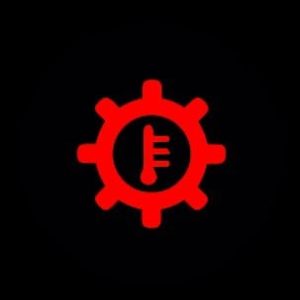
Red Light
If the illuminated light is red, there is a safety issue, or something is wrong with your car. In this case, you need to pull over safely, shut down the engine and call a repair service or shop to see if your vehicle is safe to drive or needs service.
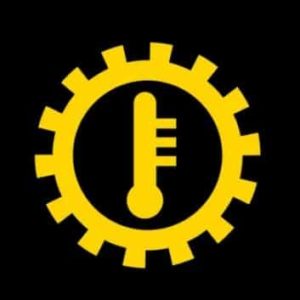
Yellow Light
If the illuminated light is yellow, it reminds you that something needs to be serviced soon, such as an oil change. While not an emergency, you should repair the problem as soon as possible.
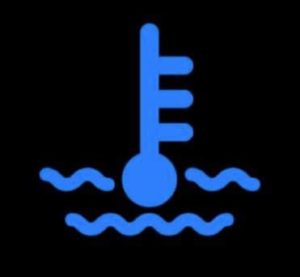
Blue Light
If the illuminated light is green or blue, it indicates that a system is working properly or is on, such as when your high beam headlights are on.
You might like this: Understand The Working of Single Cylinder Engine
Types of Car Dashboard Lights
Following are the main types of car dashboard lights:
- Oil Pressure warning light
- Tire pressure warning light
- Engine temperature warning light
- Traction control alert light
- Anti-lock brake system warning light
- Check Engine Light
- Battery alert light
- Low fuel indicator light
- Washer fluid indicator light
- Brake warning light
- Lane Departure warning light
- Transmission temperature warning light
- Direction indicator light
- High beam indicator light
- Low beam indicator light
- Lamp out indicator light
- Fog lamp indicator light
- Seat belt reminder light
- Security indicator light
- Airbag warning light
- Powertrain light
- Electronic throttle control warning light
- Hood open indicator light
- Key not light
- Door ajar
Read Also: A Complete List of Car Body Parts [Names & Functions] Pictures
Warning Lights
#1 Oil Pressure Warning Light
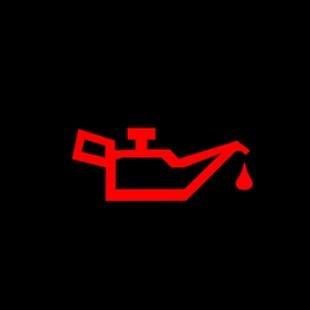
There is an oil pressure warning light on the dashboard of every vehicle to warn the driver when the oil pressure is too low. In addition, it can also be caused by a faulty oil pump, pickup tube, blocked oil filter, or an internal oil leak.
When you are driving, and your oil warning light suddenly turns ON, please take this seriously because it indicates that your car may be unsafe to drive. If the warning light is on, stop driving and turn off the engine immediately. The best thing to do is find a place to safely park your car and check the oil level.
#2 Tire Pressure Warning Light
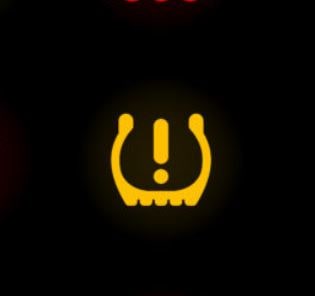
The primary purpose of the Tire Pressure Warning Light is to alert the driver when the tire pressure is too low and can lead to unsafe driving conditions. If the light flashes, it indicates that your car tires may not be sufficiently inflated, leading to improper tire wear and possible tire failure.
This TPMS light comes on when the air pressure on one or more of your tires drops below 25%. Once the light is on, you have to find your way to the mechanic shop or the air pump. However, it is not safe to continue driving your car with the lights on. If this continues, your vehicle’s tires will wear out excessively and prematurely.
#3 Engine Temperature Warning Light
The function of the Engine Temperature Warning Light is to alert the driver that the car engine is running at too high a temperature. Simply put, the engine is overheating. When the light is on, it may be overheating, lack of cooling water, or cooling system trouble.
Driving with temperature lights on can cause severe damage and engine failure. Initially, the engine may produce a knocking sound resulting in the wasted head gasket, rings, and pistons. If the temperature light remains on, immediately stop the engine in a safe place on the road, away from traffic.
#4 Traction Control Alert Light
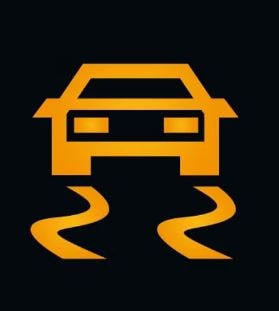
These car dashboard lights usually give an indication that your vehicle is operating properly while maintaining traction on a slippery road. But sometimes, it can also mean that there are some damaged sensors or wires in your car.
The traction control warning light comes on when the system detects a loss of traction, such as in snowy or rainy weather. If your vehicle’s traction control light is on, make sure your car’s traction control is not off. If the traction control light turns on while driving, do not panic. Seek a safe place, turn your vehicle off, and restart it.
#5 Anti-lock Brake System Warning Light
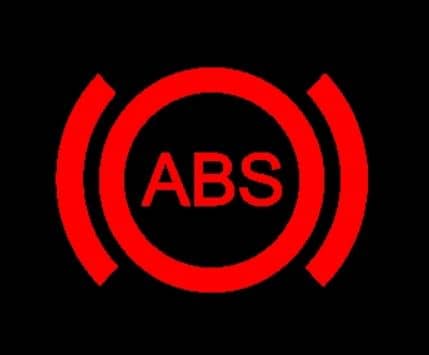
The ABS warning lights are also car dashboard lights that alert the driver to a possible problem with the ABS (Anti-Lock Braking System). The ABS system prevents the wheels from locking when a driver pushes the brake pedal in an emergency or on a slippery surface.
Common reasons this light might turn ON are a terrible ABS module, low level in the fluid reservoir, broken wheel speed sensor, or system shutdown. The driver can still drive the car with the ABS light on, as it does not affect normal braking. It is entirely normal for the ABS warning light to turn on and off like this, and it usually lasts about 2-4 seconds.
Read Also: What is the function of Crankshaft Position Sensor?
#6 Check Engine Light
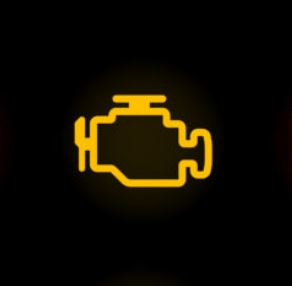
The check engine light is one of the car dashboard lights that detect a problem with the powertrain (engine, transmission, and other parts) that may increase tailpipe emissions. It is generally found on the instrument panel. When illuminated, it becomes amber or red.
Something small like a loose or faulty gas cap can cause the check engine light to turn on. When the check engine light flashes, you need to stop driving as this often leads to an engine misfire. In this case, pull over and call a tow service, or you can try to tighten the gas cap yourself.
#7 Battery Alert Light
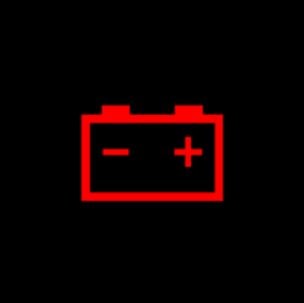
The function of the Battery Alert Light is to indicate a battery that is no longer being charged by the alternator and is operating only on its own charge. In other words, the vehicle is only running on battery power which will eventually deplete, causing the vehicle to stall.
An illuminated battery light may be caused by a loose or bad battery cable. Even if the battery light is on while driving, you can continue driving for a short period of time before your car stops. You can take steps to avoid this, like inspecting or testing the battery and checking the alternator.
#8 Low Fuel Warning Light
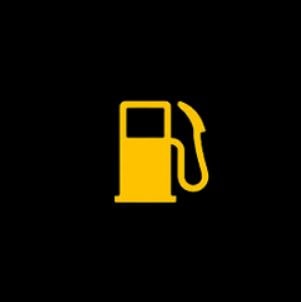
These are car dashboard lights indicating the amount of fuel remaining in the vehicle. Plus, it alerts the driver when your fuel tank is running close to empty and how many miles are left. The new models also indicate the gas level and remaining mileage.
As the fuel level goes down, you will start picking up debris from the bottom of the tank, this damages both the fuel filter and fuel pump. The quickest and easiest way to turn off the low fuel indicator light is to get some gas/fuel. However, if it still turns on, there may be a problem with the fuel level sensor.
#9 Washer Fluid Warning Light
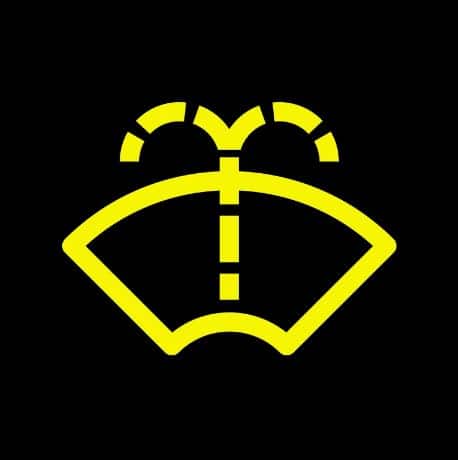
The function of the washer fluid indicator light is to let the driver know that windshield washer fluid is low and to remind them to fill it up. Washer fluid is always important to keep fluid in the reservoir and keep it from drying out.
This light is usually yellow and has a windshield icon on the car’s dashboard. To turn off this indicator light, simply check your windshield washer fluid, and refill the tank if necessary. Once you fill the reservoir with fluid, the light immediately disappears.
#10 Brake Warning Light
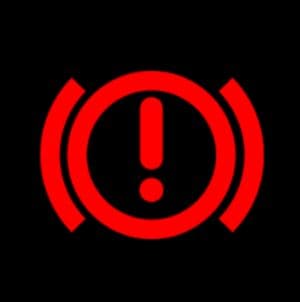
This car dashboard light indicates a problem with the brake system and has a dangerous red color. The dangerous color red means immediate risk, potentially compromising the general safety of the vehicle. Most mechanics warn drivers not to drive a car with the brake warning light on because it is dangerous.
The most common reasons why the brake warning light is on are due to engaged parking brake or worn-out brake pads. If your parking brakes are engaged even slightly, the brake warning light will illuminate. To fix this problem, simply release the parking brake completely.
Read Also: How does a Crankshaft Position Sensor work?
#11 Lane Departure Warning Light
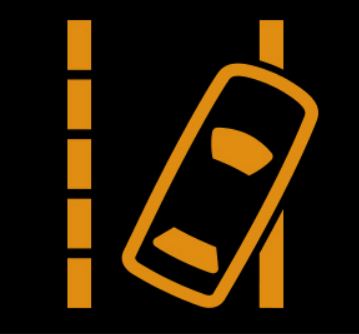
Lane departure warning lights help you avoid accidents when your lane drifts or departs. When your vehicle moves out of its current lane without a signal, the LDW light blinks with a beep sound. Therefore, it helps keep you up in your lane.
This light will keep burning for most of your travels. If you see that the light is on, slowly adjust your car’s position back to the center of the lane. To turn the LDW light off on its own, press the LDW switch on the steering wheel to turn the system on or off.
#12 Transmission Temperature Warning Light
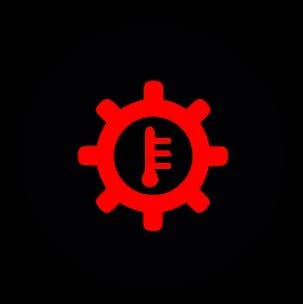
These are also car dashboard lights that indicate the transmission is operating at a higher temperature than usual. This could mean that your vehicle lacks transmission fluid, causing your transmission to overheat.
You can drive your car until it reaches 270 degrees of temperature. When it comes to this level, the transmission will stop working. Driving with the light on can result in accidents due to car damage and expensive repair work. The transmission temperature light will remain on until you stop driving, allowing the transmission to cool down.
Indication Lights
#13 Direction Indicator Lights
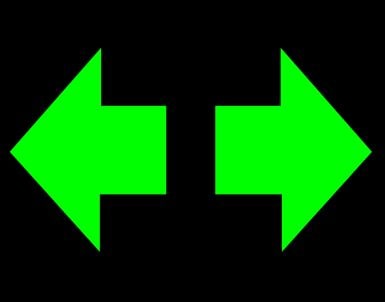
As the name suggests, a direction indicator light is a flashing light that signals the driver to change the direction of the vehicle to the right or left. The flashing arrows on your car’s dashboard are only used to show which turn signal is active.
Both turn signal arrows will flash as you turn on your hazard lights. When the indicator flashes faster than usual, check all bulbs, as one will likely burn out. Fast flashing is caused by a change in the overall resistance in the circuit when a bulb is depleted.
#14 High Beam Indicator Light
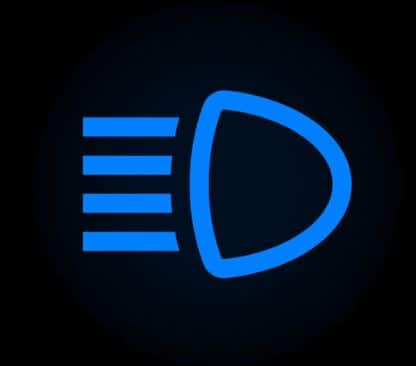
This is an indicator light on the dashboard of the car to indicate that you have turned on your high beams. As you switch from low to high beam, you will see the high beam indicator blue system on the dashboard.
When you switch from your high beam back to low, the light from the dashboard will automatically disappear. Keep in mind that when using high beam lights, be sure to dim your lights when approaching other vehicles.
#15 Low Beam Indicator Light

The low beam indicator lights are also types of car dashboard lights. It usually appears as a green symbol on the dashboard of the car and features lines pointing down from the headlamp.
Whenever you point your headlights down, the low beam indicator lights up. It is generally used to reduce glare for oncoming traffic. Most manufacturers suggest drivers use dipped headlights between sunset and sunrise or whenever weather conditions make it difficult to see.
Read Also: What are the different types of Chassis & Frames? [PDF]
#16 Lamp Out Indicator Light
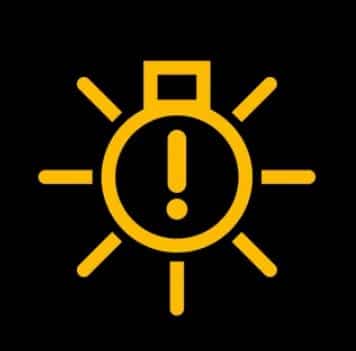
The lamp out symbol on the dashboard usually indicates that the exterior lights on the vehicle are not working properly or have burnt out. In addition, this also means that the connection to one of the lights is getting loose and needs to be fixed.
#17 Fog Lamp Indicator Light
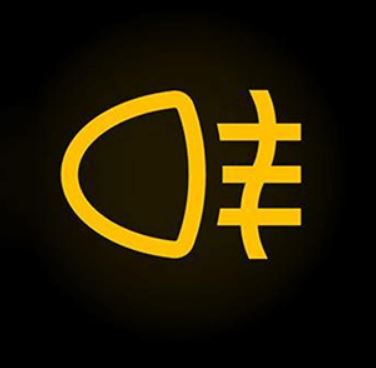
The fog lamp indicator light displays the driver when the fog lights are on. Some models of vehicles have fog lights built-in. These lights are originally placed lower than normal driving lights to prevent reflected light from coming back.
Some types of vehicles may also have a rear fog light. Fog lights are used only when the headlights are on low beams. These are similar to headlights, with an indicator on your dashboard that tells you when they are on. To turn off the fog light indicator, simply turn the fog light switch to the OFF position.
Safety Lights
#18 Seat Belt Reminder Light
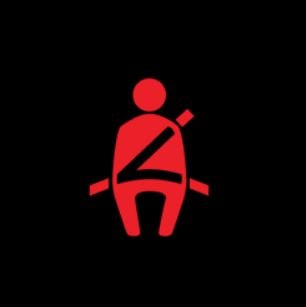
This is a safety light that indicates that a passenger has properly fastened their seatbelt, while an empty seat shows that the seatbelt is still secure. The seat belt light comes on when the car is traveling at more than 15 mph without a seat belt.
It consists of a reed switch located inside the seat belt buckle and determines whether the passenger is wearing their seat belt. You can easily turn off the seat belt light by wearing your seatbelt. If the seat belt light stays on even after wearing the belt, you may need to seek an engineer to repair the fault.
#19 Security Alert Light
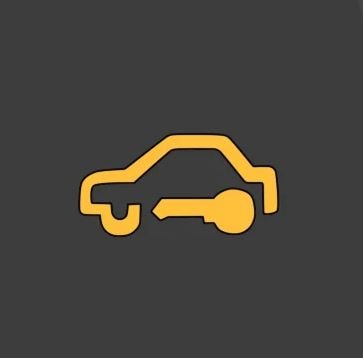
These types of car dashboard lights indicate that the security system is either working properly or tells you that there is a system fault. To put it simply, it means that your car does not recognize the key that you are using to start the car.
This is because the immobilizer protection system can be triggered by an attempted theft, but it could also be a problem with the battery. To avoid this, insert the key into the ignition and turn it to the ON position. Leave the key in position for about 10-15 minutes.
#20 Airbag Warning Light

Airbag warning lights indicate a problem in the system when the airbag cannot be inflated in the event of a collision. While it is possible that all airbags may also work with the SRS system, malfunctioning airbags are a safety concern.
The common reason is that your airbag clock spring is not working. If the airbag light is on, this is a dangerous situation that you should avoid driving if possible. These lights may not turn off on their own and may need to be reset manually.
Read Also: 16 Types of Tires for Cars with Their Purposes
#21 Powertrain Warning light
The powertrain warning light indicates that a problem has been detected in the automatic transmission or transaxle. In addition, this light can also alert that there is a problem with the electric shift control system.
If the powertrain light appears while you’re driving, it should be fine to drive, if necessary. The main reasons for powertrain failure are slowing down, abnormal handling, and noise under the bonnet. The easiest way to clear the powertrain light is to turn the ignition on and off.
#22 Electronic Throttle Control Warning Light
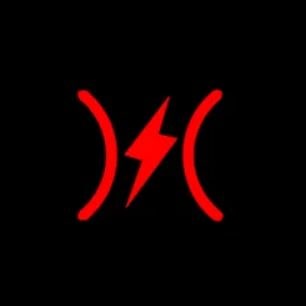
The Electric Throttle Control warning light indicates to the driver if there is a problem with the throttle system. The throttle system usually consists of the throttle body, the accelerator pedal, and the wiring between them.
The light alerts that there is a possibility that either you will not be able to move or you will not be able to stop the movement of your car. Driving with lights on can be extremely dangerous for you and your passengers. By manually resetting the electronic throttle control, you can avoid this problem. But it can be a difficult task.
Other Lights
#23 Hood Open Warning Light
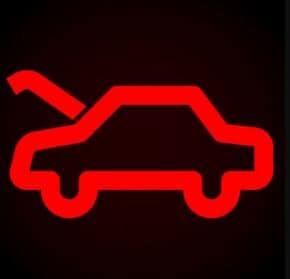
The hood open indicator light is employed for one purpose only and that is to verify that the hood is completely closed. There is a sensor in the hood of a car that acts like a simple electrical switch.
When the hood is down, the switch is open. Similarly, when the hood is up, the switch is turned off and a warning is illuminated on the dash. If the light is lit, simply pull up securely and check the hood to make sure it is completely closed.
#24 Key Not Warning Light
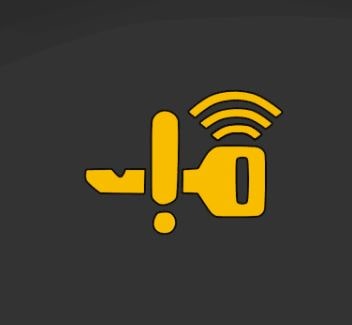
The function of a key not light is to alert you when the key is not detected in your car, so you can’t drive without it. If the key is not detected, the light will turn orange or red, and a green light will let you know if the key is in range.
The main reason for the key not problem is because the battery inside the key is dead. When the battery in the key fob dies, it will no longer be able to communicate with the car and you will not be able to start your car. So, try replacing the battery fob if this warning light comes on even when you have the correct key.
#25 Door Ajar Warning Light
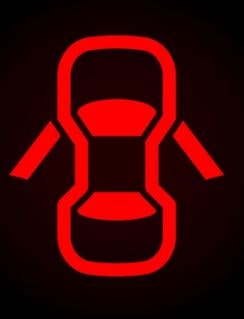
These are the type of car dashboard lights that light up when a vehicle door is not closed properly. This is usually caused by a door switch that fails in the open position. Nowadays, many cars are equipped with door switches.
The car’s computer monitors the switch and alerts the driver when it senses that one of the doors is not completely closed. Other common issues include a wiring problem and a faulty instrument cluster or module. To avoid this warning light you just need to close all doors securely, and the light will turn itself off.
Watch the below video to get a better understanding of car dashboard lights:
Conclusion
All these car warning dashboard lights are for a purpose. They are meant to let you know that something in your vehicle is not as it should be.
As a vehicle owner, it is essential to address the issue regarding your vehicle immediately. Ignoring such warning lights can lead to serious vehicle problems and costly repairs.
Now, I hope I’ve covered everything you were looking for about “Car Dashboard Lights”. If you still have any doubts or questions regarding this topic, leave a comment below I’ll definitely reply. If you liked it, then share this with your friends.
Want free PDFs direct to your inbox? Then subscribe to our newsletter.
Download PDF of this article:
You might like to read more in our blog:
Wow nice 😉
Thanks.